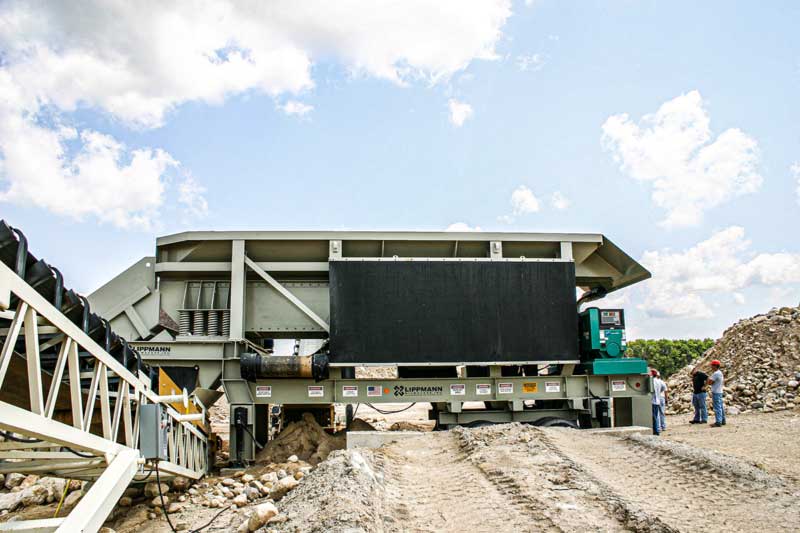 While fun to say, a rip rap plant plays a significant part in erosion control. It is machinery used to make rip rap materials, which are large, unevenly shaped boulders, rocks, and concrete pieces. They are strategically placed to spread the energy of flowing water, waves, currents, and ice to prevent soil erosion and keep structures stable.
While fun to say, a rip rap plant plays a significant part in erosion control. It is machinery used to make rip rap materials, which are large, unevenly shaped boulders, rocks, and concrete pieces. They are strategically placed to spread the energy of flowing water, waves, currents, and ice to prevent soil erosion and keep structures stable.
Rip rap is primarily used in coastal regions, riverbanks, lakeshores, and other areas affected by water erosion. But it may also be used for non-water-related issues where erosion control is necessary, like on slopes, embankments, or places where soil erosion happens due to wind or other factors, like gravity (think landslides).
Rip rap plants include conveyors, crushers, screens, and sorting tools. The machinery processes raw materials into the appropriate sizes and shapes required for specific erosion control projects.
Common types of rip rap materials include:
- Natural Rocks. Natural rocks from local quarries or nearby geological formations vary depending on the regional geology. Rocks used for rip rap include granite, limestone, basalt, and sandstone.
- Concrete Blocks. Premade concrete blocks in specific sizes and shapes are often used in rip rap structures where uniformity and stability are paramount. These blocks may be reinforced with steel for added strength and durability.
- Armor Stones. These are large, heavy rocks, usually weighing in at several tons each. In coastal protection projects, armor stones provide stability and durability in high-wave-energy environments.
- Gabions. A gabion is a wire mesh container filled with rocks and stones. They are used in construction projects for erosion control, retaining walls, slope stabilization, and landscaping.
- Rubble. Broken fragments of rocks or concrete debris are not as uniform as other rip rap materials. Still, they can improve erosion control when compacted in the right spot. Rubble’s claim to fame is being used when irregular shapes are needed to fill gaps or create textured surfaces.
We’ve talked about suitable materials to use for rip rap. Now, let’s dive into what rip rap plants accomplish. They:
- Get rocks ready. Rip rap plants process raw materials like rocks, boulders, and concrete blocks into the proper sizes and shapes needed for the project. They crush oversized rocks, screen materials for uniformity, and sort them based on the size and shapes required.
- Confirm quality control. These plants screen materials for debris, impurities, and irregularities, eliminating those that could mess with the effectiveness of erosion control.
- Make it efficient. Automation improves productivity through the processing and sorting of rip rap materials. It can deal with many resources quickly and precisely, reducing the time and labor required for manual handling, which saves money.
- Protect the environment. A rip rap plant makes corrosion control structures sustainable by processing and sorting locally sourced rocks and boulders. This helps minimize the environmental impact associated with transporting materials from elsewhere.
- Look long-term. Rip rap plants produce materials that ensure long-term erosion effectiveness. Rip rap walls can last an average of 70-100 years, making them durable and long-lasting shoreline restoration options.
Rip rap plants play a significant role in preserving coastal regions, shorelines, riverbanks, and other vulnerable areas. And by doing so, ecosystems, habitats, and communities are protected from the impacts of erosion.
Would you like more information? Take a look at Lippmann Rip Rap Plants, which are entirely self-contained, portable units designed for optimal screening and scalping of material. Then give us a call at 800-648-0486 or contact us with any questions you have. We’d love to help with your rip rap plant needs!